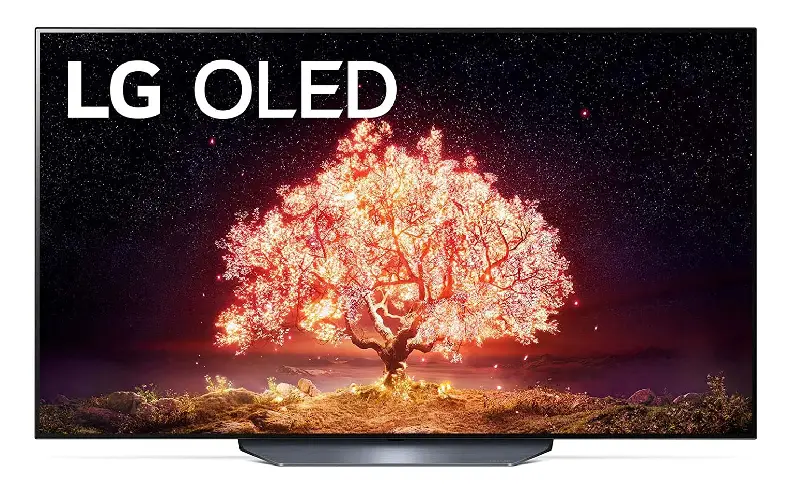Smart TVs are now a raging demand on the world market, with varieties in size, brands, functions, software, technology, and many more aspects. But what’s common in all these TVs are the technologies based on screen and resolution. QLED and OLED are the two standouts now popular among many brands. We can see Samsung, Hisense, and TCL leading at QLED while the latter is owned by brands such as sony, LG, and others. So what makes the two different screen TVs different? Let’s get into the basics of OLED and QLED screen TV.
Basic definition :
To Start the OLED vs QLED screen tv, let’s get into the general definition of both terms. OLED starts with an “organic light-emitting diode.” QLED while as stands for Quantum dot tv defined by Samsung. The difference between these technologies is that the QLED is a regular LED TV.

The QLED TVs use Quantum dots to create a broad color spectrum, similar to the color and brightness that we experience in real life. In QLED TVs, the dots are contained in a film, and the light that hits them is provided by an LED backlight. The backlight provides 100% color volume to maintain color accuracy from the dark to the brightest colors. OLEDs are designed to fit in all light conditions and absorb external light to reduce reflections.

While OLED TVs are no less, OLED TVs which are “organic light emitters” are quite popular in terms of performance as well. Unlike QLEDs OLEDs do not have supporting LED backlights, but instead, independent pixels that themselves emit light in white, red, green, and blue subpixels. This means a realistic black level or infinite contrast, muted brightness, and lightning-speed contrast rate.
OLED vs QLED screen:
What makes one better than the other?
Image quality:
The comparison is a tough one because both of these deliver their own advantages, for an upgraded performance better than traditional LED TVs. Both OLED and QLED technologies have almost similar resolutions, both offer 4k to 8k resolution. Both have similar video processing and color exposure so both of them are quite the competitors.
QLED with brighter display:

QLEDs TVs are quite known for their brightness peak. As these TVs are backed up with backlights these LED lights are incredibly bright. Such quantum dots can even maximize their lights with brighter hues without losing saturation. With that, the bright full display comes an advantage for good delivery of HDR pictures. OLED TV however cannot emit such brightness due to the lack of LED backlights.
OLED has better contrast :

As we’ve discussed the independent pixels that emit their own light, in OLED. The OLED comes as a champion of good contrast, with its ability to completely turn off unused pixels. This means that the black levels of the technology actually set the screen to be completely black in places where it needs to be. QLED TVs cannot fully block the light, even with the best light dimming there’s still some light through, which will still brighten the parts that are supposed to be completely dark.
Performance:

As OLED panels do not need backlight, they consume less power compared to LED TVs. LED TVs need a backlight to produce brightness. Also, its light must pass through the LCD shutters before emitting the display; so, it naturally consumes more power, even for the same level of brightness. They also emit less heat.
Talking about eye comfort, OLED produces significantly less blue light than LED-backlit QLED TVs. This ensures a safer eye experience and health.
QLED comes with more size options:

QLEDs come in various ranges of sizes including options such as 32-inch,43-inch,50-inch,75 inches, and furthermore. OLED TVs were also available in sizes as well, but limited. However, as of 2022, numerous companies have extended size ranges including bigger sizes up to 97 inches. This comes with a great cost as well, with OLED TVs which we will go on the next topic.
Price war:
QLED TVs will probably come at more fair prices for now with the screen ranges available. But to keep things fair, OLED television has quite extended its price range as well. We still let the QLED win this price comparison, because QLED comes with a fairer price. for example, the recently launched LG 55” OLED 4K UHD TV costs at the price for Rs. 2,64,990. While The Xiaomi Mi TV Q1 75 QLED TV which boasts a 75-inch display, comes at the price of Rs. 299,999. The price comparison is quite a difference between these.
Concluding the OLED vs QLED screen:
Both premium technologies, OLED and QLED come with their own respective advantages and offers. Though OLED has been many choices for QLED in terms of picture quality it is the absolute pick. QLED TVs show off their longer lifespan, larger screen sizes, lower price tags, and no risk of burn-in. So in order to pick your smartTV in range of your cost budget, you can have the pick of your choice.
You can also check out our smart tv collection price list :
You can also check out the feature video on the top 5 features of the LG C1 OLED TV.







